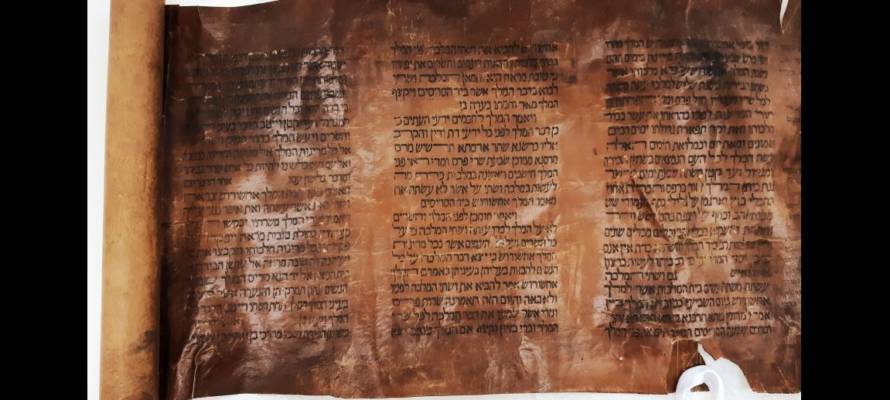Scroll of Esther written by a scribe on the Iberian Peninsula around 1465, before the Jews’ expulsion, has been acquired by the National Library of Israel in Jerusalem.
By Yakir Benzion, United With Israel
One of the world’s oldest known scrolls of the biblical Book of Esther has recently been gifted to the National Library of Israel in Jerusalem, home to the world’s largest collection of textual Judaica, where it has also been made available online for the first time.
Written in Hebrew, the Book of Esther relates the tale of how an evil advisor to the ancient king of Persia schemed to commit genocide and kill all the Jews. However, the king took the young and beautiful Jewish woman Esther as his queen. who revealed the scheme to the monarch and saved the Jews.
The story is the center of the Jewish festival of Purim and is celebrated by Jews around the world who read Megillat Esther out loud in the evening and again the following morning, with the holiday this year happening at the end of this week.
Scholars have determined from both Carbon-14 dating and the style used that the newly received Scroll of Esther was written by a scribe on the Iberian Peninsula around 1465, prior to the expulsion of the Jews by the Spanish and Portuguese at the end of the 15th century.
The scroll, called a “megillah” in Hebrew, is written in brown ink on leather in an elegant, characteristic Sephardic script, which resembles that used in the writing of a Torah scroll. The first panel, before the text of the Book of Esther, includes the traditional blessings recited before and after the reading of the megillah and attests to the ritual use of this scroll in the Jewish community there before the expulsion.
Experts say there are very few Scrolls of Esther in existence that date from medieval period in general, and from the 15th century in particular. Torah scrolls and Esther scrolls from pre-Expulsion Spain and Portugal are even rarer, with only a handful known to exist.
Prior to the donation of the scroll by Michael Jesselson, a New York investor and philanthropist, and his family, this scroll was the only complete 15th-century megillah in private hands. Jesselson is a long-time supporter of the Library and other projects in Israel. His father, Ludwig Jesselson, was the founding chairman of the international council of the Israel National Library and for decades was a strong leader and advocate of the library.
The new addition is “an incredibly rare testament to the rich material culture of the Jews of the Iberian Peninsula,” said Dr. Yoel Finkelman, curator of the National Library of Israel’s Haim and Hanna Salomon Judaica Collection. “The Library is privileged to house this treasure and to preserve the legacy of pre-expulsion Iberian Jewry for the Jewish people and the world.”
Founded in Jerusalem in 1892, the National Library of Israel (NLI) serves as the dynamic institution of national memory of the Jewish people worldwide and Israelis of all backgrounds and faiths.
The Library is working on an ambitious project to digitize much of its collection so it can be shared online with diverse audiences in Israel and around the globe. A new home of the National Library is currently under construction next to the Knesset and scheduled to open in 2022.
The Library’s treasures include the largest collection of written Judaica ever assembled, significant handwritten works by luminaries such as Maimonides and Sir Isaac Newton, exquisite Islamic manuscripts dating back to the ninth century, and archival collections of leading cultural and intellectual figures including Martin Buber, Franz Kafka, Natan Sharansky and Israeli songwriter Naomi Shemer.
The National Library also holds the largest collection of Jewish and Israeli music as well as world-class collections of manuscripts, ancient maps, rare books, photographs, communal and personal archival materials.
